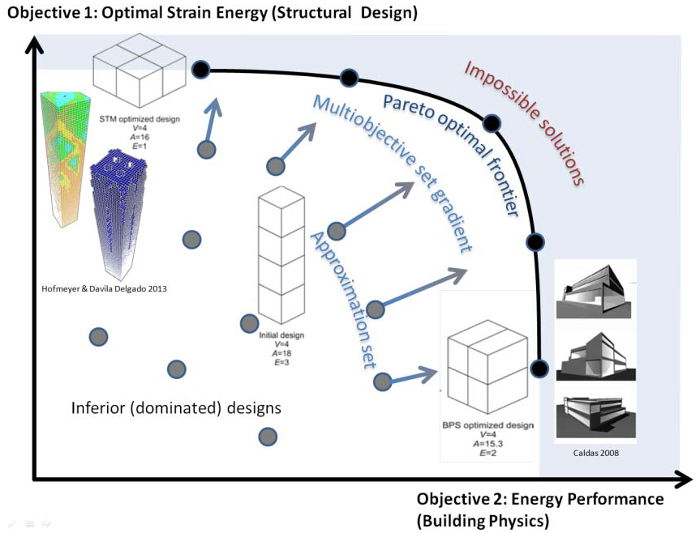
Algorithms help improve building design
Modern optimization algorithms offer solutions for architectural decisions like spatial, structural and energy efficiency. A young computer scientist from Leiden University co-authored a paper that won the Best Paper Award at a leading conference in Krakow during the summer.
Constant trade-off
In architecture, there is a constant trade-off between many aspects of the building process. Architects may prefer to design beautifully shaped city icons. However, these may not be the most stable or energy-efficient ones. PhD student Koen van der Blom from the Leiden Institute of Advanced Computer Science (LIACS) developed algorithms that can lead to the optimal shape of a building and its wall configurations.

Cooperation with TU Eindhoven
Van der Blom from LIACS is working on this topic with an engineering PhD student from the Technical University of Eindhoven. The project “Excellent Buildings by Forefront Multidisciplinary Optimization” is a project funded by the STW Open Technology Grant in 2015. It is meant to find building shapes that combine low energy use with optimal spatial and structural performance.
Best Paper Award
The paper was presented at the 23rd International Workshop of the European Group for Intelligent Computing in Engineering (EG-ICE), a well-established event in computational aspects of engineering that took place in Krakow in the beginning of summer. There, the paper was awarded the Best Paper Award. Van der Blom’s supervisor at LIACS Michael Emmerich: “I am very proud of these young researchers, who are only in the second year of their PhD project.”
